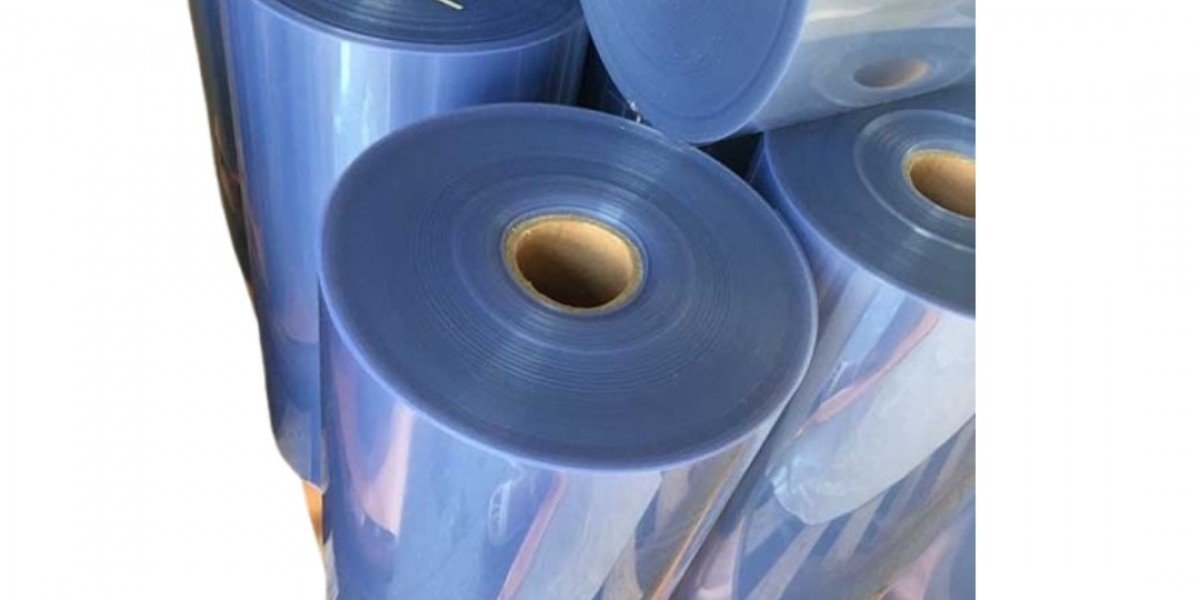This sophisticated process, which involves heating a plastic sheet to a pliable temperature and then stretching it over a mold using vacuum pressure, has transcended its humble beginnings to become a cornerstone in the creation of a vast array of products across diverse industries. The inherent ability to precisely replicate intricate shapes and contours, coupled with the selection of materials boasting specific performance characteristics, has positioned engineered vacuum form plastic sheets as a pivotal technology driving innovation and efficiency in modern production methodologies. From the sleek interiors of automobiles to the protective shells of medical devices and the functional components of industrial machinery, the influence of this technology is both pervasive and profound, underscoring its significance in our technologically advanced world.
A Symphony of Materials: Tailoring Plastic Sheets for Optimal Performance in Vacuum Forming
The true ingenuity of engineered vacuum form plastic sheets lies not only in the forming process itself but also in the meticulous selection and preparation of the thermoplastic materials employed. A diverse palette of polymers, each possessing unique attributes, is available to meet the specific demands of various applications. Acrylonitrile Butadiene Styrene (ABS) stands out for its robust impact resistance and rigidity, making it ideal for automotive parts and protective housings. Polycarbonate (PC) offers exceptional clarity and high impact strength, rendering it suitable for safety shields and optical components. High-Density Polyethylene (HDPE) provides excellent chemical resistance and durability, finding applications in containers and industrial linings. Polypropylene (PP) is valued for its fatigue resistance and low moisture absorption, making it a preferred choice for food packaging and medical devices. The selection process is a critical stage, involving a deep understanding of the intended application's environmental stresses, mechanical loads, and aesthetic requirements, ensuring that the final vacuum-formed product exhibits optimal performance and longevity.
Precision in Creation: Delving into the Intricacies of the Vacuum Forming Process
The transformation of a flat plastic sheet into a complex three-dimensional form through vacuum forming is a carefully orchestrated process involving several key stages. Initially, a thermoplastic sheet is securely clamped within a frame and then heated to its softening point, rendering it pliable and receptive to molding. Once the desired temperature is achieved, the heated sheet is lowered or draped over a meticulously crafted mold, which dictates the final shape of the product. The crucial step involves the application of a vacuum beneath the sheet, drawing the softened plastic tightly against the contours of the mold. This vacuum pressure ensures the faithful replication of even intricate details and sharp angles. Following the forming stage, the plastic is allowed to cool and solidify, retaining the shape imparted by the mold. Finally, the formed part is removed, and any excess material is trimmed away, resulting in a finished product that adheres precisely to the design specifications. The precision inherent in this process makes it particularly advantageous for producing components with consistent dimensions and complex geometries, a hallmark of modern engineering demands.
India's Ascending Role: The Landscape of Vacuum Forming Plastic Sheet Manufacturing
India has emerged as a significant hub for manufacturing across various sectors, and the production of vacuum forming plastic sheets is no exception. Several Vacuum Forming Plastic Sheets Manufacturers In India have established themselves as key players, catering to both domestic and international markets. These manufacturers offer a wide spectrum of materials and capabilities, ranging from standard commodity plastics to high-performance engineered polymers. The growth of industries such as automotive, packaging, electronics, and consumer goods within India has fueled the demand for high-quality vacuum-formed components, leading to significant advancements in the local manufacturing infrastructure. Companies are increasingly investing in state-of-the-art equipment and skilled personnel to meet the evolving needs of their clientele, offering customized solutions and maintaining stringent quality control standards.
Ahmedabad's Manufacturing Prowess: A Regional Center for Vacuum Forming Excellence
Within India's burgeoning manufacturing landscape, Ahmedabad has carved a niche as a prominent industrial center, and this extends to the realm of Vacuum Forming Sheet Manufacturers In Ahmedabad. The presence of a robust industrial ecosystem, coupled with a skilled workforce and favorable business environment, has fostered the growth of numerous companies specializing in the production of vacuum-formed plastic sheets. These manufacturers often cater to a diverse range of industries located within the region and beyond, providing tailored solutions for applications spanning from packaging and signage to automotive components and appliance housings. The geographical concentration of these manufacturers in Ahmedabad facilitates collaboration, knowledge sharing, and the development of specialized expertise within the sector.
The Breadth of Application: Industries Embracing Vacuum Formed Plastic Sheets
The versatility of engineered vacuum form plastic sheets has led to their widespread adoption across a multitude of industries. The automotive sector utilizes vacuum-formed components for interior trims, dashboard panels, and exterior body parts due to their durability, lightweight nature, and design flexibility. The packaging industry relies heavily on this technology for creating clamshell packaging, blister packs, and trays that protect and showcase products. In the medical field, vacuum-formed plastics are used for medical device housings, trays for sterilization, and prosthetic components, owing to their hygienic properties and ability to be precisely shaped. The signage and display industry benefits from the ability to create large, visually appealing signs and point-of-sale displays. Furthermore, the appliance, electronics, and construction sectors also leverage the advantages of vacuum-formed plastics for various components and housings, highlighting the truly cross-industrial impact of this versatile manufacturing process.
Innovation as the Driving Force: Pushing the Boundaries of Vacuum Forming Technology
The field of engineered vacuum form plastic sheets is not static; it is characterized by continuous innovation and advancements in materials, processes, and applications. Ongoing research and development efforts are focused on enhancing the properties of thermoplastic materials, improving the efficiency and precision of the forming process, and exploring new and sustainable applications. Multi-layer vacuum forming, for instance, allows for the creation of parts with different material properties in distinct layers, offering enhanced performance characteristics. Advances in tooling and mold design are enabling the production of more complex and intricate shapes with tighter tolerances. Furthermore, there is a growing emphasis on the use of recycled and bio-based plastics in vacuum forming, reflecting a broader industry trend towards sustainability and environmental responsibility. These continuous innovations are expanding the capabilities and applications of engineered vacuum form plastic sheets, ensuring their continued relevance and growth in the future.
Conclusion: Shaping the Future with Engineered Plastic Forms
In conclusion, engineered vacuum form plastic sheets represent a powerful and versatile manufacturing technology that continues to drive innovation across a wide spectrum of industries. The ability to tailor material properties, precisely replicate complex designs, and achieve cost-effective production has solidified their position as a critical component in modern manufacturing. The thriving ecosystem of Vacuum Forming Sheets Manufacturers In India, including the specialized expertise found among Vacuum Forming Sheet Manufacturers In Ahmedabad, underscores the nation's growing capabilities in this field. As material science advances and processing techniques become more sophisticated, the potential applications of engineered vacuum form plastic sheets will undoubtedly continue to expand, shaping the future of product design and manufacturing for years to come.
Frequently Asked Questions (FAQs)
1. What are the primary advantages of using engineered vacuum form plastic sheets compared to other manufacturing processes?
Engineered vacuum form plastic sheets offer several key advantages, including lower tooling costs compared to injection molding, the ability to produce large and complex parts, design flexibility for intricate shapes and features, relatively fast production cycles, and the option to use a wide range of thermoplastic materials with tailored properties. This makes it a cost-effective and versatile solution for various applications, particularly for medium to large production volumes.
2. How does the selection of the plastic material impact the final properties of a vacuum-formed product?
The choice of plastic material is crucial as it directly dictates the final properties of the vacuum-formed product. Different thermoplastics offer varying levels of impact resistance, temperature tolerance, chemical resistance, flexibility, rigidity, and aesthetic qualities. For instance, ABS provides high impact strength, while polycarbonate offers clarity and high heat resistance. Therefore, understanding the specific requirements of the application is paramount in selecting the appropriate material to ensure optimal performance and durability of the final product.
3. Can vacuum forming be used to create products with intricate details and complex geometries?
Yes, vacuum forming is capable of replicating intricate details and complex geometries, although the level of detail achievable depends on factors such as the mold design, material thickness, and vacuum pressure applied. While it may not achieve the same level of fine detail as some other processes like injection molding, advancements in tooling and techniques allow for the creation of parts with significant complexity, including curves, ribs, and textured surfaces. Skilled mold design and precise control of the forming process are essential for achieving high levels of detail.
4. What considerations are important when selecting a Vacuum Forming Sheets Manufacturer In India for a specific project?
When selecting a Vacuum Forming Sheets Manufacturer In India, several key considerations come into play. These include the manufacturer's experience and expertise in handling the specific type of plastic material required, their capabilities in terms of mold design and fabrication, the size and complexity of the parts they can produce, their quality control standards and certifications, their production capacity and lead times, their pricing structure and overall cost-effectiveness, and their ability to provide customized solutions and meet specific project requirements. It is also beneficial to consider their location and communication efficiency for seamless collaboration throughout the project lifecycle.







